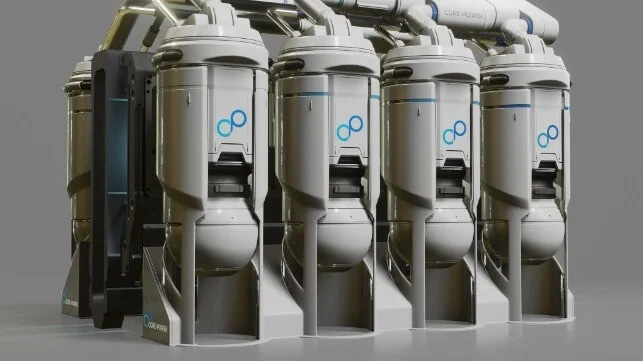
新着情報
Should Shipping Give More Thought to Nuclear Power?

The twin existential problems facing the world currently is the global energy crunch and climate change. Interestingly, both are intertwined in the sense that if the world gets it right on energy use, it could help mitigate the climate change devastation.
Whereas there is a near-consensus on what constitutes a carbon free energy source, the debate on use of nuclear power has been polarizing. But the attitude on nuclear energy seems to be changing thanks to the present energy crisis and volatile oil markets.
“Demand for advanced nuclear reactors will be worth about $1 trillion globally. That includes the jobs to building those reactors and all the associated supply chains that will need to ramp up to support the industry. Bottom line is spreading advanced nuclear energy is a priority for us,” Jennifer Granholm, U.S Secretary of Energy said in a panel discussion on Nuclear Energy and Climate Change at United Nations last week.
Other major world economies from China to Germany are also ramping up efforts for nuclear power. Historically, this is not the first time the world is getting exuberant about nuclear power, with the most recent wave petering out after Japan’s Fukushima disaster in 2011.
As research and production of small modular reactors (SMR) advances, the complementary role of nuclear power in energy transition is becoming clear. For instance, in industries where emissions are hard to abate like merchant shipping, SMRs could play a role to complement other green fuels in achieving net zero goals.
In fact, without incorporating nuclear power into the mix of possible alternative fuels, the shipping industry will face an extra challenge in its decarbonization plans.
As energy crisis continues to bite since Russia invaded Ukraine, bunker markets are seeing a greater price margin between the traditional bunker fuel and LNG, which is hitting record highs in the third quarter. At Rotterdam, a major bunker market, LNG sales have plunged by almost 40 percent in the second quarter as its prices soar. Consequently, LNG has become uneconomical for most LNG dual-fueled ships
This fuel price differential is also a significant setback for shipping, with the industry depending on alternative fuels like LNG to cut on emissions.
With necessary investment and scaling of SMR, nuclear power could help in creating a competitive energy ecosystem needed to lower the cost of producing green shipping fuels, such as hydrogen and ammonia.
Some green corridors are already earmarked to catalyze the deployment of zero-emissions fuel and vessels in maritime industry. Thus, a new wave of green corridors is likely to emerge as shipping stakeholders strive to reduce their carbon intensity along major trade routes.
Leveraging on advanced reactors, nuclear power promises the most reliable and cost-effective source of energy for production of green shipping fuels along a green corridor.
At a recent event, UK based maritime and technology innovation company Core Power demonstrated how a unique floating nuclear power plant, which it is helping to design, could help produce green ammonia to decarbonize transatlantic trade.
“Making green ammonia from 100 percent clean hydrogen and nitrogen is very energy intensive and requires reliable low-cost electricity, and production of fuels must happen where we need it and when we need it. Placing a floating refinery at either end of a green corridor, in the US Gulf and UK continent would provide a reliable, low-cost fuel supply to all ships trading on that route and have plenty of green hydrogen-based fuel left over for supply to the inland and coastal markets,” said Dr. Rory Megginson, head of Analytics at Core Power in London.
According to Core Power’s estimates, a single installation of its proposed floating nuclear plant in the US Gulf could produce 1.3 million tons of 100 percent green ammonia, at a cost that could compete with low sulphur bunker fuel and carbon taxes.
The Core Power design features an ambient pressure molten salt reactor, minimizing the probability of environmental pollution in the event of an accident.
“Combining the output of intermittent offshore wind with reliable floating nuclear means the billions spent on renewables can live up to its promise and shake up its heavy dependence on fossil fuels on still or stormy days,” added Dr. Megginson.
Source of the materials:



